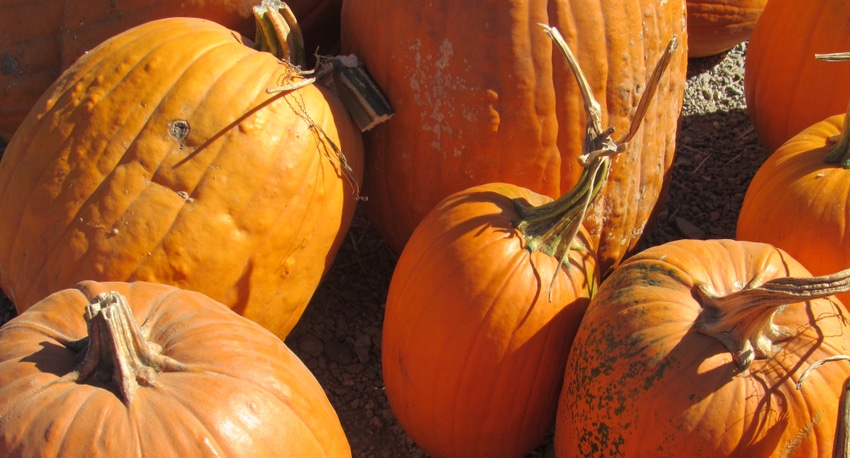October 29, 2021

On a Halloween pumpkin, warts and bumps have a certain spooky charm. But some unwanted bacteria-caused blemishes open the door to infections that rot and ruin this bright, seasonal fruit.
Pseudomonas syringae is a rod-shaped bacterium that infects a range of vegetables and fruits. A mild case lends pumpkins “a little character,” but doesn’t significantly hurt the fruit, said Washington State University plant pathologist Lydia Tymon.
In a bad year, however, spurred by wet, humid conditions, “warts provide an opening for other infections to invade,” she said. “You can get other, more aggressive pathogens that break down the crop.”
Tymon collaborates with scientists at WSU’s Northwestern Washington Research and Extension Center at Mount Vernon, Wash., as well as Pennsylvania State University, North Carolina State University, Auburn University, the U.S. Department of Agriculture, and industry partners to better understand P. syringae’s origin, disease cycle, and plant hosts.
Her work began several years ago, following an experiment growing pumpkins on biodegradable plastic mulch at WSU’s Northwestern Washington Research and Extension Center at Mount Vernon.
“We started noticing warts,” said Tymon, who decided to take a closer look at these unusual symptoms. “They look different from the warty pumpkins that people have intentionally bred.”
The first sign of infection, typically spotted in in early summer, is chlorosis, or yellowed leaves.
“It’s such a bright yellow, I can drive by a pumpkin field and spot it right away,” Tymon said.
Later, warts form on the fruit, cracking the rind and creating wounds that allow other pathogens to enter and infect.
Rain may play a role
Tymon suspects that raindrops play a role in bouncing the bacteria onto the fruit. She infected different varieties of gourds, including tiny, white decorative varieties, pie pumpkins, and butternut squash, and learned that thin-skinned varieties are most at risk. Pumpkins with a thick, glossy skin seem to be resistant.
“We think the water rolls off, so there’s no time for an infection to develop,” Tymon said.
The pumpkin-infecting bacteria could be a novel strain, or it could have evolved from a pathogen of beets.
Partner scientists are continuing work to identify host plants and learn how the bacterium spreads. Their work could benefit important specialty crops in Washington’s Skagit Valley and other agricultural regions, along with this Halloween favorite, a preferred test fruit for Tymon.
“By understanding the epidemiology of the bacteria that damage pumpkins, we can help farmers better protect their crops,” she said.
Source: Washington State University, which is solely responsible for the information provided and is wholly owned by the source. Informa Business Media and all its subsidiaries are not responsible for any of the content contained in this information asset.
You May Also Like




